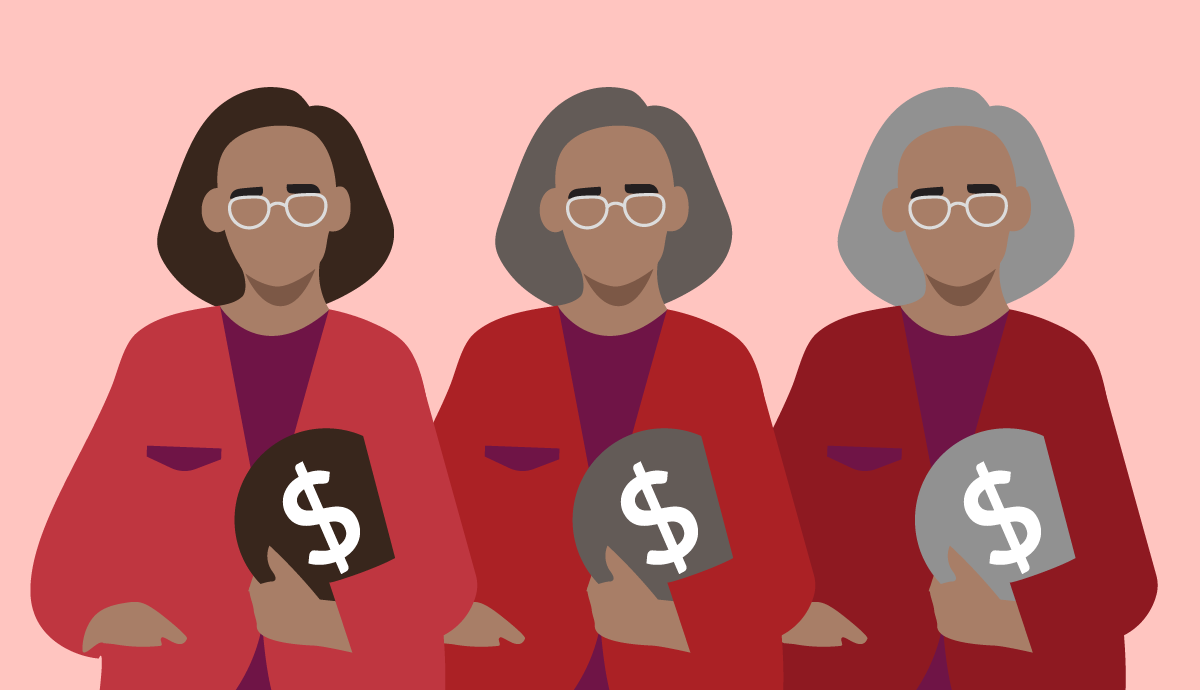Managing Your Student Loan Debt After 50
Understanding Your Options for Loan Repayment or Forgiveness.

It’s understandable to have questions about your student loan options as you get older. We know that it can often feel overwhelming and confusing. Together, AARP Foundation and the National Consumer Law Center want to guide you through the basics to help you feel more in control and know what options are available.
What are the types of student loans?
There are two types of student loans: federal student loans and private student loans. Over 92% of all student loans are federal, meaning you’re borrowing money from the federal government. Private student loans come from a bank, credit union, or other private lender.
Differences between federal and private student loans
Federal Loans
- The Federal Government is the lender for your own loans or your children’s
- Annual borrowing limits based on the cost of education
- More affordable repayment options
- Congress sets the interest rates annually
- More relief and cancellation programs
- Default begins after 270 days of nonpayment
- If a loan defaults, the government can garnish wages, Social Security, and tax refunds indefinitely until the loan is paid off or rehabilitated
Private Loans
- Private banks are the lender and subject to state law for your own loans, your children’s, or as co-signer for someone else
- Fewer/ no borrowing limits
- Fewer/ no affordable repayment options
- Rates are set by the bank, and can be variable
- Fewer/ no relief or cancellation programs
- Loans can default after only 1 missed payment
- Fewer/ no options to pause payments
Why does it matter that I know what loans I have?
It’s very important to know what types of loans that you have because the specific type of federal loans impact your eligibility for relief programs and options for lowering your monthly payments.
Federal Student Loan Types
-
- Direct Loans
-
- Stafford Loans (either subsidized or unsubsidized) for your education
-
- Grad PLUS Loans (for your graduate education)
-
- Parent PLUS Loans (as a parent for your child’s education)
-
- Consolidation Loans (a combination of one or more federal student loans)
-
- Direct Loans
-
- Perkins Loan (stopped being offered in 2018)
-
- FFEL (stopped being offered in 2010)
-
- Stafford Loans (either subsidized or unsubsidized) for your education
-
- Grad PLUS Loans (for your graduate education)
-
- Parent PLUS Loans (as a parent for your child’s education)
-
- Consolidation Loans (a combination of one or more federal student loans)
-
- FFEL (stopped being offered in 2010)
-
- Spousal Consolidation (stopped being offered in 2006)
-
- HEAL (stopped being offered by 1998)
How do I find out if I have a Federal Loan?
To find out if you have a Federal Loan, start with StudentAid.gov During the past several years, your student loan servicer may have changed. As an older adult it’s more likely that you may have multiple types of loans and it’s possible that you have multiple loan servicers.
Your dashboard has so much information! It’s important that you download this for your records or take screenshots to save your information.
Now that you know who your loan servicer(s) is, log in with your credentials and download a copy of your payment history for your records.
How do I find out if I have a Private Loan?
To find out if you have a Private Loan, check your credit report. Federal Law guarantees that you can request a free copy of your credit report from all three credit bureaus (Equifax, Experian, and TransUnion) every 12 months.
You can request a copy of your report online at AnnualCreditReport.com. It’s important to check all three credit bureaus because they may have different information about your student loans. Once you have your reports, review the “installment loans” section which is where student loans are typically listed. The report should include the name of the lender. You should cross-reference this against your StudentAid.gov account. If you want more tips on what else you can do with your credit report now that you have access to it, read more from AARP.
Now what?
Now that you know what types of loans you have, it’s important for you to have a plan. There are three primary strategies to tackle your student loan debt:
- Pay the minimum until I qualify for loan forgiveness or cancellation
- Best for: borrowers with high loan balances who have low- to- moderate incomes, or those who are already retired. This may be a best fit for those who have a chronic health condition that prevents them from being able to work, those working in public service, or a teacher.
- Strategy: make the minimum, on-time, qualifying payments to pursue long-term loan forgiveness through IDR, or apply for TPD, or PSLF.
- Tips: Ensure that you meet the program criteria and keep track of your payment history. If there are months that you cannot afford the required payments, contact your loan servicer to discuss deferment or forbearance options so that you don’t lose progress towards your goal of loan cancellation. If you are a teacher or work in a qualifying public service role, it’s suggested that you verify your employment every year even if you have the same employer.
- Pay the minimum until the end
- Best for: borrowers who cannot realistically pay off their loans or don’t qualify for loan cancellation programs.
- Strategy: Review the TPD eligibility criteria and have a discussion with your physician if you have a chronic condition or disability. If you don’t qualify, then focus on making the minimum required payments under the cheapest repayment plan to ensure that you don’t go into default and face the severe consequences of wage or social security garnishment.
- Tips: Set an annual reminder to recertify your income for your income driven repayment plan. Be comfortable with carrying this debt, knowing that federal student loans are discharged upon death so they will not pass along to your family.
- Pay off my loans as soon as possible
- Best for: borrowers who have a low loan balance relative to their income.
- Strategy: there are a variety of strategies to pay off debt faster such as the snowball method where you apply extra payments to the smallest loan amount first with the minimum payments for all other loans until the smallest loan is paid off. And then roll that same amount to the next loan. It’s important to know that student loan interest accrues daily and all extra payments will get applied to outstanding interest first and then the principal so timing your payments is important. Either making an extra payment on the same day your monthly payment is due, or making an extra payment half way through the month to gradually slow the amount your interest accrues between payments.
- Tips: Consider applying larger lump sum payments if you get a windfall such as a bonus or tax refund.

Learn how to manage your student loan debt using practical tips—watch AARP Foundation and NCLC’s in-depth webinar series.

Take Control of Your Student Loan Debt
Join us live or watch our webinars developed for older adults to learn about student loan programs.
Join Live or Watch Later